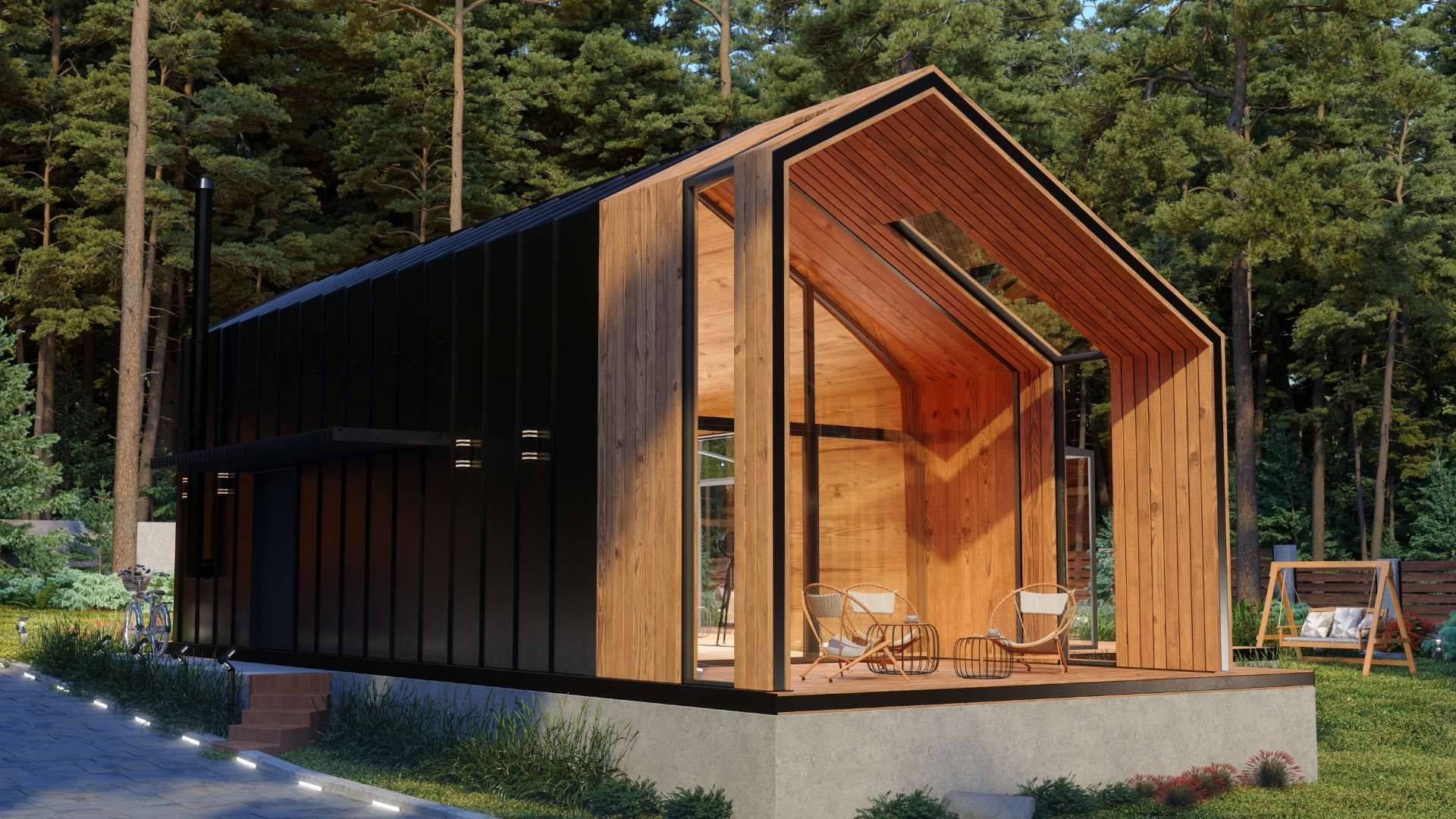Agile v Idle: The Property Class That Outperforms in Any Market

Every day I’m asked the same question over and over . . what’s the best type of property to buy now?
The property market – like all markets – is always changing. When it comes to buying property in the current market, it probably won’t feel like there’s much to choose from, and most people will think they’re only looking at either a house or unit / town house.
Once you really start looking though, there’s a vast and growing variety of properties that will really work for you and also plenty that won’t.
So how do you choose? What do you base your decisions on? And how do you protect yourself from buying a problem property that will set you back financially?
Firstly, let’s clarify the question
If you’re wondering about the ‘best type’ of property to buy, remember you should be thinking ‘what’s the best type of property FOR ME to buy. The truth is there’s an almost limitless range of property types to buy, and the fastest way to get into difficulty with property is to follow someone else’s strategy, or be pushed into buying something that’s convenient to purchase. More on this later.
Market changes = explosion of opportunities
Innovations and adjustments in the property market are constant, however recent changes to planning legislation and zoning represent great opportunities for property owners and buyers. Couple this with increased infrastructure activity and demographic changes due to migration and it doesn’t take much to see a new landscape emerging.
Even if the range of opportunity is growing, as a buyer you’re still faced with the dilemma of selecting the best property to buy.
At The Property Frontline, we use more than 60 data points to evaluate properties and help our clients select the best choice matching THEIR specific requirements. We also use a property classification we developed which involves identifying whether a property is agile or idle.
Take a look at the explanation below as this classification will help you sift through the range of opportunities currently available so you can choose properties that meet your criteria.
Agile property classification
Basically, a property in the agile class would be one that gives rather than takes, a property that performs no matter what the market is doing, a property that will continue to adapt and produce as time goes by. Just like the definition of agile, agile property is limber and flexible in that it can be changed to take advantage of market opportunities to optimise benefits.
Examples include:
- two bedroom house with the opportunity to add an extra bedroom / range of rooms by adding to the back, splitting a room, or going into the roof
- small house on well zoned block – complete knock down and rebuild extra structures
- unit in older block – opportunity for cosmetic renovation, or option to knock down and build double the amount of units
- commercial property with the ability to change and optimise use or add an extra income stream
- property (unit or house) on block large enough to split off side or back block
- property located in coveted destination location with opportunity for seasonal higher rents not too far away from an expanding city
- recently built property in fast growing area with game-changing infrastructure on the way.
Agile properties will ideally be cash flow positive or very close to it, can be at any budget point and size, and can be found in a wide range of locations. Specifically, agile properties will enhance a buyer’s ability to continue to build their portfolio or buy more when it’s appropriate for the owner.
Idle property classification
A property classed as idle is the opposite of agile. An idle property ‘takes’ rather than gives – that is, it costs money to own it; there is no real upside, no opportunity to add value, is vulnerable to changes in the market, will not stand on its own if the owner wants to travel or take a work break, and one where the owner will have little control over the property’s performance. Other descriptors include properties that are unproductive, useless, and hollow with limited potential to increase in value due to limited scarcity or buyer demand.
Examples include:
- units typically purchased in an ‘off the plan’ process located within a large block (5 or more levels) near other large blocks
- houses or ‘duplexes’ in new estates built on small (tiny) blocks of land and surrounded by vast areas of greenfield / undeveloped land (where thousands more similar properties are scheduled to be built)
- a new town house in a large complex of town houses, in a suburb where it’s cheaper to purchase an older / existing house.
Idle properties will often be purchased using a negatively geared financial structure, with the purchaser being ‘sold’ on using depreciation to ‘save on tax’. Idle properties put the buyer in a bad financial position and leave the buyer worse off than they would be without the property.
Some will argue they can purchase an idle property at a bargain price (hello multi-sold ‘off the plan’ or house+land package), however even this is unfounded logic due to the cost of not purchasing (the opportunity cost) an agile property using the same funds.
The dark side
Considering property through the agile v idle lens will provide some protection for the rise of the dark side of the property industry. In suburbs where there are more sellers than buyers (for example – mining towns), we will see hard core spruikers work forcefully to draw in the unsuspecting public, and entrap buyers into a purchase that may destroy their financial future.
Protect yourself
Note there is a difference between agents and developers who sell quality new builds, as opposed to ‘floggers’ who funnel buyers into a limited range of choice.
So how do you recognise the members of the dark side of the industry? It’s surprisingly easy . . just follow the money. If your ‘advisor’ is paid by commission, they cannot – by definition – have your best interests at heart. Sure, they may present as ‘really nice’ people but they are either misguided or just plain shonks.
By definition, anyone paid a commission to ‘recommend’ a property will only show you properties where they receive a commission, or worse . . they will be influenced by the highest amount of commission in order to present a buyer with a shortlist. This means the buyer will not be shown the full range of properties available and will often pay a premium to cover the ‘advisor’s’ commission. There’s two checks you can run if you find yourself pulled into this vortex.
- Ask the ‘advisor’ to show you a comparable property where they aren’t receiving a commission.
- Run a simple search on any property platform – such as realestate.com.au or domain.com.au – to get price comparisons and insights into the amount of stock on the market.
Outlined below are characteristics of two professional roles (real estate agent and the qualified advisor) and characteristics of those operating on the dark side of the industry.

Think reasonably
Revelations coming from the last banking industry royal commission should be evidence enough to show the murky depths an industry can fall into when performance is based on commission. The property industry has taken steps to weed out unscrupulous operators, however the final decision will remain with the buyer as to whether they will be duped or not.
A point of clarification
Thankfully, news is filtering out about the dangers of the bad aspects of the industry. Some buyers try to protect themselves by avoiding ‘new’ property and just focus on existing structures. This approach will protect buyers, but not all new property is ‘bad’ or will fail to perform. This is the reason we developed the agile / idle classification.
The other point of clarification we always explain to our clients is that property performance is dependent upon the owner as well as the property’s features. For example, I’m an experienced renovator and aim to restore properties rather than knock them down. This means I can squeeze more performance out of a property than someone who doesn’t have the time or interest in renovating a property. In other words, levels of each property's agility will vary when considered in light of the buyers’ skills, needs and aspirations.
Benefits of agile over idle
As a buyer, considering any property through the lens of the ‘agile versus idle’ property classification will help you see further than just ‘price’ as a decision making criteria, and also protect you from a bad purchase. In addition, focusing on agile property types will put you in a position to continue to buy with a view to building a portfolio that is resistant to market downturns.
Crucially, filling your portfolio with agile properties will provide you with the ability to efficiently pay down debt, sell off components or just let time do the work so you can live debt free. Some proponents of idle property will argue you can do this with idle property . . however you would need to buy at least double the amount of properties at comparable price points to achieve this. Not only are there increased costs associated with this approach, but also an increase in time to purchase and manage the properties, as well as increased risk.
The truth
Properties classed as agile will perform in any market. Of course, good property can be turned bad by doing the wrong thing to it – for example, selling too quickly or spending too much on a renovation. The truth is that investors with successful and resilient portfolios have purchased properties in the agile class. If you would like to know whether the property you’re considering is agile or idle, don’t hesitate to make contact.
About the Author
Debra Beck-Mewing is the CEO of The Property Frontline and Editor of Property Portfolio Magazine. With over 20 years of experience buying property across Australia, Debra is a skilled property strategist and buyers agent known for uncovering tailored opportunities — from family homes to multi-use investments.
She has deep expertise in advanced strategies including renovations, granny flats, sub-division, and development. A Qualified Property Investment Advisor (QPIA®), licensed real estate agent, and holder of a Bachelor of Commerce and Master of Business, Debra combines strategic insight with hands-on experience.
Debra is the creator of the Buyer Success Program™ – Australia’s only interactive, in-the-moment support system for property buyers, designed to help everyday Australians cut through the chaos and buy with confidence. She also leads Buy Like A Genius™, a premium end-to-end buyers’ agency service for busy professionals seeking expert property acquisition without the stress.
As a passionate advocate for greater transparency in the property and wealth industries, Debra is a sought-after speaker, author, podcast host, and participates on numerous committees including the Property Owners’ Association.
Download your guide
Start Buying - Stop Crying
There’s plenty of opportunities if you’re trying to buy a property in the current market, and the news gets better if you qualify for financial assistance packages.
DON'T GUESS, STRESS OR OVERPAY
Learn how to turn the market in your favour no matter where it heads next, by using the tips included in our guide.
We hate SPAM. We will never sell your information, for any reason.









